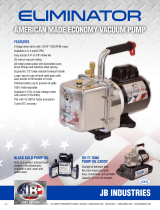
• If an insufficient amount of engine oil is used, damage to the
engine may result.
• Do n
ot overfill the engine with oil.
• This generator is equipped with a low oil pressure switch this
system will stop the engine automatically when the oil
pressure falls below the minimum pressure required.
• This helps prevents damage such as bearing seizures etc.
However, this should not be relied upon and the engine oil
level should be checked and topped up if required, daily.
Wear suitable PPE, suggested but not limited too
3.2. Check and refill the engine oil.
3.2.1. To ensure the generator maintains an
optimum performance and the life of the
generator is as long as possible, it is important
to use the correct engine oil – SAE10W/30 –
SAE15W/40 (API CH-4/CF/SJ/SL diesel engine
oil or higher grade) and change after the first
20 hours, then every 100 hours.
3.2.2. If the correct engine oil is not used, or the
engine oil is not replaced every 100 hours, as
required, the risk of crankshaft bearing failure,
piston seizure, piston ring sticking and
accelerated wear of the cylinder liner, main bearing and failure of other moving
components increases significantly. The generator lifespan will be greatly reduced if oil
level and oil changes are reduced.
3.2.3. Remove oil filler cap and check engine oil level
3.2.4. If oil level is below the lower level line, refill with SAE
API CH-4/CF/SJ/SL diesel engine oil on dipstick, or to
the top of filler neck. N.B. do not screw oil filler in the
oil filler cap when checking oil level.
3.2.5. Change contaminated oil.
3.3. Service the Air Cleaner.
•
Do not wash air filter with detergent.
• Replace the air filter if the engine output decreases or
excessive exhaust smoke is noticed.
• Never run the generator without the air filter, otherwise
rapid engine wear will result.




















